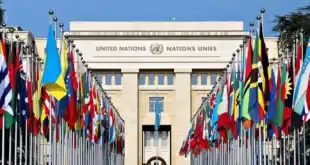When designing a monitoring and evaluation plan, just as for any project plan, it is always a good idea to begin with a clear articulation of what the M&E hopes to achieve. Having a clear understanding of what the M&E role and function is required to accomplish is key to ensuring that the activities are well-defined, and purposeful and that these can be planned over time. Planning M&E is significant, as the team will need to be clear on when different instruments are used, and when the best time is to gather certain information relative to overall project milestones.
Clearly define the results
As you create your M&E Plan, it is always good to start with clearly defining the results which the project (and the M&E hopes to achieve). To develop a results or outcomes framework, you might make use of a problem tree where you identify challenges and then state the solutions, and what it looks once it is fixed, i.e. once you achieve your programme purpose. Working with results framing, helps teams to be clear on the final vision, as well as what achievement of the interim goals means. This is also useful in complex projects, where different teams are working on slightly different impact areas of beneficiary groups.
Develop indicators
Once you have your high-level framework, stated in the language of results, the next step is to develop indicators for how you will measure whether these results have been achieved. The most commonly used system for defining indicators is to develop a Logical Framework or Log Frame. There are many online tools available to develop this. As you think about how you have stated the results, and how (and when) these might be measured, you will see time playing a much more significant role as you specify. Indeed, the T in SMART (indicators which are Specific, Measurable, Achievable, Relevant and Time-bound) requires just this – that indicators are given timeframes for achievement to make them relevant and to give some bounds and meaning to the change your project hopes to achieve.
Build your log frame
In M&E, timing is everything. Time and sequence. As you build your log frame, and think carefully about which changes you hope to see sooner, as outputs perhaps, and which you expect to see more long-term; and as you reduce and tabulate the dream vision, it is important to never lose sight of the story behind the change, and the lives of real people and communities. Balancing the expression of your impact between clear, quantitative impact, and observable change is an ongoing challenge.
Consider significant milestones
As you develop your M&E plan, be sure to consider significant milestones. For example, if your project plans to create change within a group of schools, creating this change may be dependent on gaining buy-in from school principals. Rather than stating each step in terms of calendar months, making these achievements relative to the attainment of key milestones can help to keep the plan flexible and realistic.
Measure change
As you state the change you hope to achieve in the language of programme logic, it is useful to think of which elements of the change your programme might have direct control over, and which elements are merely within your sphere of influence. As you get into medium- and long-term outcomes, it is useful to think of measuring change with this framework in mind. This will help you to properly plan your M&E, as well as to select the right M&E approaches and methods for the work you are doing.
The final plan
When developing an M&E plan, be sure to work iteratively with the programme team. The final plan should include your overarching Theoretical Framework, as well as your technical Log Frame, which identifies your indicators. You should include a set of information gathering tools and instruments, along with a Gannt Chart, which provides information on which instruments are used when and by whom.



